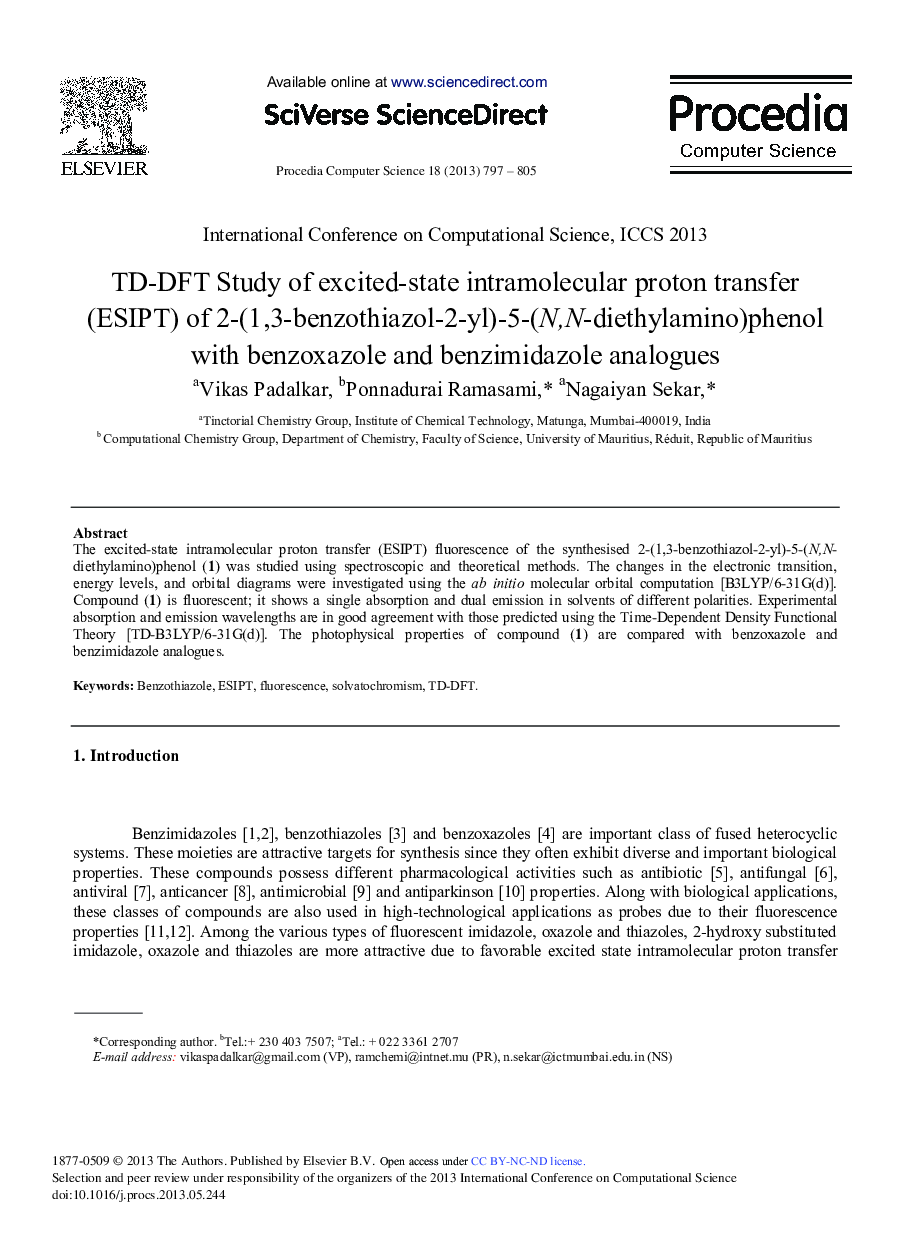| Article ID | Journal | Published Year | Pages | File Type |
|---|---|---|---|---|
| 490554 | Procedia Computer Science | 2013 | 9 Pages |
Abstract
The excited-state intramolecular proton transfer (ESIPT) fluorescence of the synthesised 2-(1,3-benzothiazol-2-yl)-5-(N,N- diethylamino)phenol (1) was studied using spectroscopic and theoretical methods. The changes in the electronic transition, energy levels, and orbital diagrams were investigated using the ab initio molecular orbital computation [B3LYP/6-31G(d)]. Compound (1) is fluorescent; it shows a single absorption and dual emission in solvents of different polarities. Experimental absorption and emission wavelengths are in good agreement with those predicted using the Time-Dependent Density Functional Theory [TD-B3LYP/6-31G(d)]. The photophysical properties of compound (1) are compared with benzoxazole and benzimidazole analogues.
Related Topics
Physical Sciences and Engineering
Computer Science
Computer Science (General)
